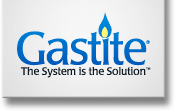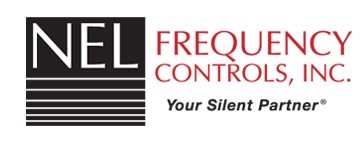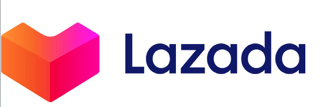Automotive Wire Market Status and Trend Analysis 2017-2026
- Report Code : 99S2214234
- Published On: Dec, 2020
- Category : Automotive & Transportation
- Pages : 115
-
Summary
Further key aspects of the report indicate that:
Chapter 1: Research Scope: Product Definition, Type, End-Use & Methodology
Chapter 2: Global Industry Summary
Chapter 3: Market Dynamics
Chapter 4: Global Market Segmentation by region, type and End-Use
Chapter 5: North America Market Segmentation by region, type and End-Use
Chapter 6: Europe Market Segmentation by region, type and End-Use
Chapter 7: Asia-Pacific Market Segmentation by region, type and End-Use
Chapter 8: South America Market Segmentation by region, type and End-Use
Chapter 9: Middle East and Africa Market Segmentation by region, type and End-Use.
Chapter 10: Market Competition by Companies
Chapter 11: Market forecast and environment forecast.
Chapter 12: Industry Summary.
The global Automotive Wire market has the potential to grow with xx million USD with growing CAGR in the forecast period from 2021f to 2026f.
Based on the type of product, the global Automotive Wire market segmented into
Cooper Core
Aluminum Core
Others
Based on the end-use, the global Automotive Wire market classified into
Body
Chassis
Engine
HVAC
Speed Sensors
Others
Based on geography, the global Automotive Wire market segmented into
North America [U.S., Canada, Mexico]
Europe [Germany, UK, France, Italy, Rest of Europe]
Asia-Pacific [China, India, Japan, South Korea, Southeast Asia, Australia, Rest of Asia Pacific]
South America [Brazil, Argentina, Rest of Latin America]
Middle East & Africa [GCC, North Africa, South Africa, Rest of Middle East and Africa]
And the major players included in the report are
Yazaki
Sumitomo Electric
Delphi
LEONI
Lear
Yura
Furukawa Electric
Coficab
PKC Group
Kyungshin
Beijing Force
Fujikura
Coroplast
General Cable
Shanghai Shenglong
Beijing S.P.L
-
With tables and figures helping analyze worldwide Automotive Wire market, this research provides key statistics on the state of the industry and is a valuable source of guidance and direction for companies and individuals interested in the market.
1 RESEARCH SCOPE1.1 Research Product Definition
1.2 Research Segmentation
1.2.1 Product Type
1.2.2 Main product Type of Major Players1.3 Demand Overview
1.4 Research Methodology
2 GLOBAL AUTOMOTIVE WIRE INDUSTRY2.1 Summary about Automotive Wire Industry
2.2 Automotive Wire Market Trends
2.2.1 Automotive Wire Production & Consumption Trends
2.2.2 Automotive Wire Demand Structure Trends2.3 Automotive Wire Cost & Price
3 MARKET DYNAMICS3.1 Manufacturing & Purchasing Behavior in 2020
3.2 Market Development under the Impact of COVID-19
3.2.1 Drivers
3.2.2 Restraints
3.2.3 Opportunity
3.2.4 Risk
4 GLOBAL MARKET SEGMENTATION4.1 Region Segmentation (2017 to 2021f)
4.1.1 North America (U.S., Canada and Mexico)
4.1.2 Europe (Germany, UK, France, Italy, Rest of Europe)
4.1.3 Asia-Pacific (China, India, Japan, South Korea, Southeast Asia, Australia, Rest of Asia Pacific)
4.1.4 South America (Brazil,, Argentina, Rest of Latin America)
4.1.5 Middle East and Africa (GCC, North Africa, South Africa, Rest of Middle East and Africa)4.2 Product Type Segmentation (2017 to 2021f)
4.2.1 Cooper Core
4.2.2 Aluminum Core
4.2.3 Others4.3 Consumption Segmentation (2017 to 2021f)
4.3.1 Body
4.3.2 Chassis
4.3.3 Engine
4.3.4 HVAC
4.3.5 Speed Sensors
4.3.6 Others
5 NORTH AMERICA MARKET SEGMENT5.1 Region Segmentation (2017 to 2021f)
5.1.1 U.S.
5.1.2 Canada
5.1.3 Mexico5.2 Product Type Segmentation (2017 to 2021f)
5.2.1 Cooper Core
5.2.2 Aluminum Core
5.2.3 Others5.3 Consumption Segmentation (2017 to 2021f)
5.3.1 Body
5.3.2 Chassis
5.3.3 Engine
5.3.4 HVAC
5.3.5 Speed Sensors
5.3.6 Others5.4 Impact of COVID-19 in North America
6 EUROPE MARKET SEGMENTATION6.1 Region Segmentation (2017 to 2021f)
6.1.1 Germany
6.1.2 UK
6.1.3 France
6.1.4 Italy
6.1.5 Rest of Europe6.2 Product Type Segmentation (2017 to 2021f)
6.2.1 Cooper Core
6.2.2 Aluminum Core
6.2.3 Others6.3 Consumption Segmentation (2017 to 2021f)
6.3.1 Body
6.3.2 Chassis
6.3.3 Engine
6.3.4 HVAC
6.3.5 Speed Sensors
6.3.6 Others6.4 Impact of COVID-19 in Europe
7 ASIA-PACIFIC MARKET SEGMENTATION7.1 Region Segmentation (2017 to 2021f)
7.1.1 China
7.1.2 India
7.1.3 Japan
7.1.4 South Korea
7.1.5 Southeast Asia
7.1.6 Australia
7.1.7 Rest of Asia Pacific7.2 Product Type Segmentation (2017 to 2021f)
7.2.1 Cooper Core
7.2.2 Aluminum Core
7.2.3 Others7.3 Consumption Segmentation (2017 to 2021f)
7.3.1 Body
7.3.2 Chassis
7.3.3 Engine
7.3.4 HVAC
7.3.5 Speed Sensors
7.3.6 Others7.4 Impact of COVID-19 in Europe
8 SOUTH AMERICA MARKET SEGMENTATION8.1 Region Segmentation (2017 to 2021f)
8.1.1 Brazil
8.1.2 Argentina
8.1.3 Rest of Latin America8.2 Product Type Segmentation (2017 to 2021f)
8.2.1 Cooper Core
8.2.2 Aluminum Core
8.2.3 Others8.3 Consumption Segmentation (2017 to 2021f)
8.3.1 Body
8.3.2 Chassis
8.3.3 Engine
8.3.4 HVAC
8.3.5 Speed Sensors
8.3.6 Others8.4 Impact of COVID-19 in Europe
9 MIDDLE EAST AND AFRICA MARKET SEGMENTATION9.1 Region Segmentation (2017 to 2021f)
9.1.1 GCC
9.1.2 North Africa
9.1.3 South Africa
9.1.4 Rest of Middle East and Africa9.2 Product Type Segmentation (2017 to 2021f)
9.2.1 Cooper Core
9.2.2 Aluminum Core
9.2.3 Others9.3 Consumption Segmentation (2017 to 2021f)
9.3.1 Body
9.3.2 Chassis
9.3.3 Engine
9.3.4 HVAC
9.3.5 Speed Sensors
9.3.6 Others9.4 Impact of COVID-19 in Europe
10 COMPETITION OF MAJOR PLAYERS10.1 Brief Introduction of Major Players
10.1.1 Yazaki
10.1.2 Sumitomo Electric
10.1.3 Delphi
10.1.4 LEONI
10.1.5 Lear
10.1.6 Yura
10.1.7 Furukawa Electric
10.1.8 Coficab
10.1.9 PKC Group
10.1.10 Kyungshin
10.1.11 Beijing Force
10.1.12 Fujikura
10.1.13 Coroplast
10.1.14 General Cable
10.1.15 Shanghai Shenglong
10.1.16 Beijing S.P.L10.2 Automotive Wire Sales Date of Major Players (2017-2020e)
10.2.1 Yazaki
10.2.2 Sumitomo Electric
10.2.3 Delphi
10.2.4 LEONI
10.2.5 Lear
10.2.6 Yura
10.2.7 Furukawa Electric
10.2.8 Coficab
10.2.9 PKC Group
10.2.10 Kyungshin
10.2.11 Beijing Force
10.2.12 Fujikura
10.2.13 Coroplast
10.2.14 General Cable
10.2.15 Shanghai Shenglong
10.2.16 Beijing S.P.L10.3 Market Distribution of Major Players
10.4 Global Competition Segmentation
11 MARKET FORECAST11.1 Forecast by Region
11.2 Forecast by Demand
11.3 Environment Forecast
11.3.1 Impact of COVID-19
11.3.2 Geopolitics Overview
11.3.3 Economic Overview of Major Countries
12 REPORT SUMMARY STATEMENT
-
The Automotive Wire Market has been segregated into various crucial divisions including applications, types, and regions. Each market segment is intensively studied in the report contemplating its market acceptance, worthiness, demand, and growth prospects. The segmentation analysis will help the client to customize their marketing approach to have a better command of each segment and to identify the most prospective customer base.
Report Objectives / Segmentation Covered :
By Companies / players:
By Regions:
By Type:
By Application:
Frequently asked questions(FAQ's):
As manufacturers prepare to scale up, Automotive Wire companies must be clear and transparent about the impact of such volatility on the balance sheet.
The Automotive Wire Market study evaluates the year spans as follows: Historical year: 2019 to 2024; Base year: 2024; Forecast period**: 2025 to 2030 [** unless otherwise stated]
As the shift to value addition continues, companies in the Automotive Wire Market face the dual challenge of improving interoperability to optimize performance and experience.
The Automotive Wire Industry stakeholders, executives, and experts, as well as individuals who need to develop consumer-friendly strategies and use technology to stay ahead of the competition.















